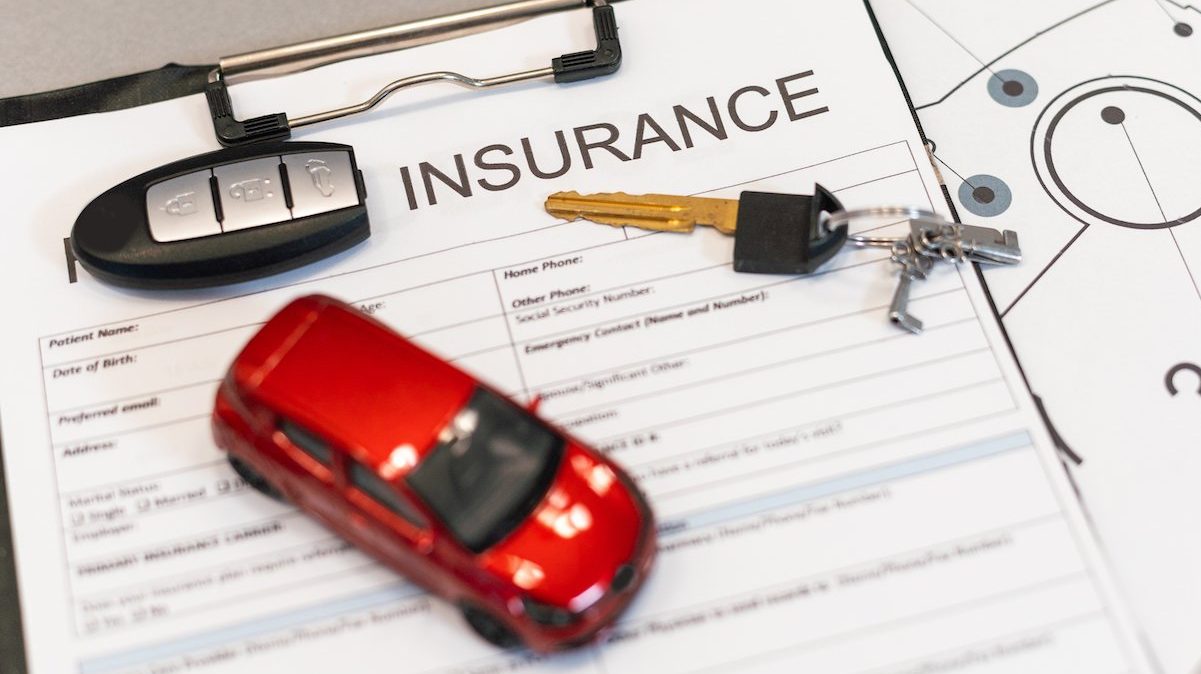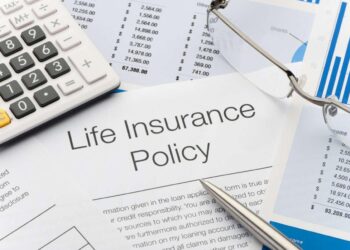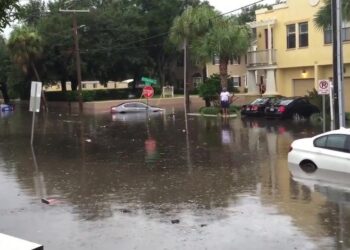The sting at the pump is now rivaled by the shock at renewal time. Across the nation, drivers are opening their auto insurance bills to find significant, often jarring, increases. “Auto Premiums Skyrocket Again” isn’t just a headline; it’s the grim financial reality for millions. This persistent upward trend demands a deep dive into the complex web of factors fueling it and, crucially, actionable strategies for consumers to navigate this costly landscape.
Understanding the Perfect Storm: Why Premiums Are Climbing Relentlessly
Auto insurance premiums aren’t arbitrary. They are calculated based on risk assessments by insurers, reflecting the anticipated cost of claims. Several powerful and interconnected forces have converged, creating a sustained surge in those costs:
A. Soaring Repair Costs: The Technological Treadmill: Modern vehicles are marvels of technology, packed with Advanced Driver-Assistance Systems (ADAS) like cameras, radar, sensors, and complex onboard computers. While enhancing safety, these features exponentially increase repair costs.
* Parts Complexity & Shortages: Replacing a sensor isn’t like replacing a bumper. These sophisticated components are expensive, and supply chain disruptions (stemming from pandemic hangovers and geopolitical issues) have caused shortages and inflated prices.
* Labor Intensity & Expertise: Calibrating a front-facing camera or radar system after a minor fender bender requires specialized equipment and highly trained technicians. This specialized labor commands premium rates and adds significant time to repair jobs.
* Material Inflation: The cost of raw materials (steel, aluminum, plastics, rubber) and energy used in manufacturing parts and operating repair shops has risen substantially.
B. Increased Accident Severity and Frequency: A Dangerous Road: Disturbing trends in driving behavior and vehicle design contribute to more expensive accidents.
* Post-Pandemic Riskier Driving: Data indicates a rise in speeding, distracted driving (especially smartphone use), impaired driving, and reckless behavior since the pandemic’s peak, leading to more frequent and severe crashes.
* Larger, Heavier Vehicles: The popularity of large SUVs and trucks increases the kinetic energy involved in collisions. When these heavier vehicles collide with smaller ones or infrastructure, damage is often catastrophic, leading to higher injury claims and total losses.
* Pedestrian & Cyclist Vulnerability: The rise in pedestrian and cyclist fatalities translates into complex liability claims with potentially massive settlements or court awards, costs ultimately passed to policyholders.
C. Catastrophic Weather Events: Nature’s Fury: Climate change is manifesting in more frequent and severe weather events directly impacting auto insurers.
* Flooding Havoc: Hurricanes and intense rain events cause widespread vehicle flooding, often resulting in total losses. The sheer volume of claims in affected regions strains insurer resources.
* Hail Damage Epidemic: Significant hailstorms cause billions in auto damage annually, denting and shattering glass across thousands of vehicles simultaneously.
* Wildfires & Wind Damage: Vehicles destroyed by wildfires or falling trees during windstorms add to the catastrophic loss burden.
D. Persistent Inflation: The Erosion of Value: General economic inflation permeates the entire auto insurance ecosystem.
* Medical Costs: The cost of treating injuries sustained in auto accidents (hospital stays, surgery, rehabilitation, medication) continues to outpace general inflation.
* Legal and Litigation Costs: Attorney fees, court costs, and increasingly large jury awards in liability cases contribute significantly to the overall claims payout.
* Operational Expenses: Insurers face higher costs for labor (salaries), technology, office space, and marketing, all of which factor into premium calculations.
E. Regulatory and Legal Environment: Shifting Sands: State-level regulations and legal trends influence pricing.
* Approval Processes: In many states, insurers must justify rate increases to regulators, but the overwhelming evidence of rising costs has led to widespread approvals.
* Tort System Pressures: Trends like “nuclear verdicts” (exceptionally high jury awards) and broader interpretations of liability increase insurers’ potential financial exposure from single events.

Regional Variations: The Uneven Burden
The impact isn’t uniform. Certain regions feel the premium surge more acutely due to localized risk factors:
-
Hurricane-Prone Coastal States: Florida, Louisiana, Texas consistently face the highest premiums due to hurricane and flood risk. Florida, in particular, grapples with a severe insurance crisis driven by extreme weather and rampant fraud/litigation.
-
Urban Centers: Higher population density translates to more traffic congestion, accidents, and vehicle theft (another costly claim), pushing premiums up in major metropolitan areas like Detroit, Los Angeles, Philadelphia, and New York City.
-
Hail Alley: States like Texas, Colorado, Nebraska, and Minnesota experience frequent, severe hailstorms, leading to spikes in comprehensive claims and regional premium adjustments.
-
States with High Uninsured Motorist Rates: Areas with a significant percentage of drivers lacking insurance (e.g., Mississippi, Michigan, Tennessee, New Mexico) force insured drivers to carry higher Uninsured/Underinsured Motorist (UM/UIM) coverage, adding to their costs.
-
No-Fault vs. Tort States: States with “no-fault” insurance systems (like Michigan, New York, Florida – though Florida is changing) often have higher premiums due to guaranteed personal injury protection (PIP) payouts regardless of fault.
Impact on Consumers: Squeezed from All Sides
The consequences of rising premiums are far-reaching and often painful:
-
Reduced Household Discretionary Spending: More money allocated to insurance means less for groceries, entertainment, savings, or debt repayment, exacerbating cost-of-living pressures.
-
Difficult Choices: Some drivers, particularly those on fixed incomes or with lower wages, face the impossible choice between maintaining legally required insurance and covering other essential expenses. This can lead to risky lapses in coverage.
-
Delayed Vehicle Upgrades: Higher insurance costs on newer, more expensive vehicles may cause consumers to hold onto older cars longer, potentially compromising safety.
-
Increased Financial Vulnerability: Drivers with minimal coverage to save money become vastly more exposed to financial ruin if involved in a major at-fault accident.
Mitigation Strategies: Taking Control of Your Premiums
While the macro trends are daunting, consumers aren’t powerless. Proactive steps can help mitigate the impact:
A. Shop Around Relentlessly: Loyalty is rarely rewarded. Compare quotes from at least 3-5 insurers annually, including regional carriers and direct-to-consumer companies. Online comparison tools can streamline this.
B. Maximize Discounts: Scrutinize every potential discount:
* Safe Driver (maintain a clean record)
* Multi-Policy (bundle auto with home/renters)
* Multi-Vehicle
* Pay-in-Full (avoid monthly fees)
* Paperless Billing & Auto-Pay
* Good Student (young drivers)
* Defensive Driving Course Completion
* Affiliation Discounts (alumni groups, employers, professional organizations)
* Low Mileage (if you drive significantly less than average)
* Vehicle Safety Features (anti-theft, ABS, airbags, newer ADAS)
C. Adjust Your Coverage Strategically:
* Review Deductibles: Raising your comprehensive and collision deductible (e.g., from $500 to $1000) can lower premiums, but ensure you can afford the out-of-pocket cost if a claim occurs.
* Evaluate Coverage Needs: If driving an older, low-value car, consider dropping collision coverage if the premium approaches the car’s value. Never drop state-mandated liability coverage.
* Reassess Loan/Lease Requirements: If you no longer have a loan or lease, you have flexibility to adjust coverage (though maintaining solid protection is wise).
D. Maintain a Stellar Driving Record: This is paramount. Avoid speeding tickets, DUIs, and at-fault accidents. Even minor violations can trigger significant premium hikes.
E. Improve Your Credit Score (Where Permitted): In most states (exceptions include CA, HI, MA, MI), insurers use credit-based insurance scores as a risk factor. Better credit often means better rates.
F. Consider Usage-Based Insurance (UBI): Programs like Progressive’s Snapshot or Allstate’s Drivewise track your driving habits (mileage, braking, speed, time of day) via a plug-in device or smartphone app. Safe drivers can earn substantial discounts. Understand the privacy implications first.
G. Explore Vehicle Choice Impact: Before buying your next car, research insurance costs. Sports cars, luxury vehicles, large SUVs, and models with high theft rates or expensive parts typically cost significantly more to insure than sedans or minivans with strong safety ratings.
H. Maintain Continuous Coverage: Gaps in insurance history are red flags to insurers and lead to higher premiums. Avoid cancellations for non-payment.
 The Road Ahead: Will Premiums Stabilize?
The Road Ahead: Will Premiums Stabilize?
Predicting the future is difficult, but several indicators suggest relief won’t be immediate:
-
Repair Complexity is Permanent: Vehicle technology will only advance, sustaining high repair costs.
-
Climate Change is Accelerating: More frequent and severe weather events are projected, increasing catastrophic losses.
-
Inflationary Pressures Persist: While cooling, core inflation (especially in medical and labor costs) remains a factor.
-
Legal Environment Uncertainty: Litigation trends and regulatory responses remain dynamic.
However, potential moderating factors include:
-
Improved Vehicle Safety: Wider adoption of proven ADAS could eventually reduce accident frequency and severity, though the data is still evolving.
-
Telematics Maturation: Wider adoption of UBI could more accurately price risk, benefiting the safest drivers.
-
Regulatory Scrutiny: Intense consumer pressure may lead to more aggressive regulatory oversight of rate filings in some states.
-
Market Competition: If loss ratios stabilize, competitive pressures could slow the rate of increase.
Conclusion: Navigating the High-Cost Highway
The phrase “Auto Premiums Skyrocket Again” captures a pervasive and deeply impactful economic trend. Driven by a confluence of technological complexity, dangerous driving, climate catastrophes, inflation, and legal dynamics, the cost of auto insurance represents a significant and growing burden for drivers nationwide. Understanding the why behind the increases is the first step. The crucial next step is proactive management. By diligently shopping around, maximizing discounts, strategically adjusting coverage, prioritizing safe driving, and considering how vehicle choice and usage impact costs, consumers can regain a measure of control. While the horizon may not promise a return to pre-surge premiums, informed action remains the best defense against the relentless climb of auto insurance costs. Vigilance and adaptation are the new necessities for every driver on the road.
Tags: rising car insurance, auto insurance costs, high premiums, save on car insurance, insurance inflation, vehicle repair costs, distracted driving, climate change insurance, usage-based insurance, car insurance discounts, insurance shopping, safe driver discount, ADAS repair, catastrophic weather claims, uninsured motorists
















